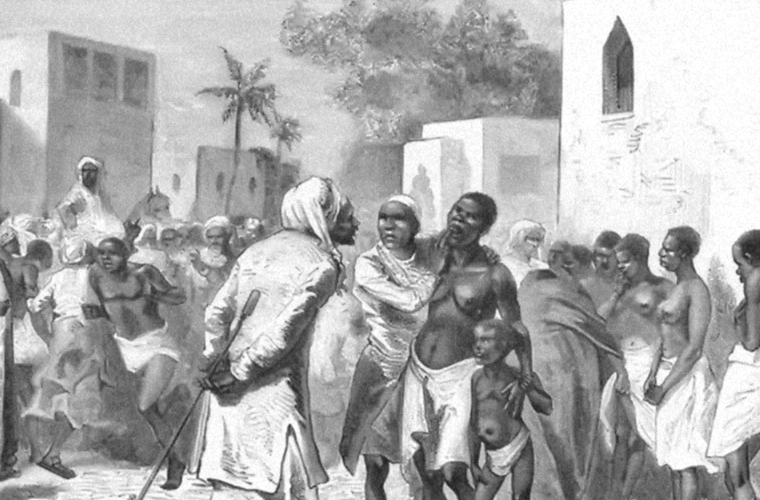The East African Arab Slave Trade, also known as the Indian Ocean Slave Trade, was a significant and devastating chapter in the history of Africa. Spanning over several centuries, this trade had a profound impact on the region, leaving a legacy that continues to resonate to this day. The roots of the East African Arab Slave Trade can be traced back to the 9th century when Muslim Arab and Swahili traders began to dominate the Swahili Coast. These traders ventured into the African interior, particularly in Tanzania, Mozambique, and Kenya, where they captured local people, known as Zanj, and transported them to slave markets on the East African Coast. Over time, the trade expanded, with an estimated 17 million individuals being sold to the Middle East and North Africa via the Indian Ocean Coast between 1500 and 1900.
The 17th century witnessed a significant acceleration in the Arab East African Slave Trade, as more merchants from Oman relocated to the island of Zanzibar. This strategic location played a pivotal role in the brisk global trade along the Swahili Coast. Notably, individuals such as Tippu Tip, an enterprising slave trader, further expanded the trade by conquering vast swathes of the African population and taking people as slaves. Once transported to the Middle East, the enslaved Zanj primarily worked on Arab estates, enduring inhumane conditions. The intolerable circumstances eventually led to the Zanj Slave Rebellion from 869 until 883. While the rebellion did not end the East African Slave Trade, it shed light on the cruelty and suffering endured by the victims of this trade.
The East African Arab Slave Trade continued to thrive until significant global events signaled its demise. The Haitian Slave Revolt marked a turning point, leading to the eventual abolition of slavery worldwide. Despite this progress, it was not until 1873 that Zanzibar outlawed the trade, facing resistance from the Arab merchant class. The formal end of slavery in East Africa came in 1909 when the trade was finally abolished.
Despite formal abolition, modern-day slavery persists in Africa, particularly in countries like Mauritania. The impact of the Transatlantic Slave Trade is widely acknowledged, but equal attention should be given to the East African Arab Slave Trade. It has been suggested that this trade is not discussed as prominently due to religious loyalty among the significant Muslim population in Africa. However, it is crucial to recognize and remember the profound impact of this trade on the region.
The East African Arab Slave Trade represents a dark period in African history, leaving a lasting imprint on the continent. While formal abolition has taken place, the legacy of this trade continues to shape social and cultural dynamics in East Africa. By acknowledging and understanding this chapter in history, we can work towards ensuring that such atrocities are never repeated and that the victims are never forgotten.

